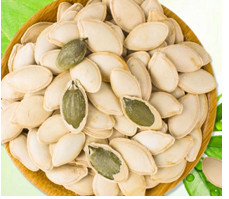Research Progress on pumpkin nutritional quality breeding

Pumpkin, a vine annual herb of Cucurbitaceae, has a long history of cultivation and is widely cultivated all over the world. Pumpkin pulp is rich in a variety of amino acids, vitamins, polysaccharides, pectin, minerals, cucurbitacin, carotenoids and other bioactive substances and nutritional components; seeds contain a large number of protein and fatty acids, through the professional sheller of pumpkin seeds, coupled with microwave drying machinery equipment to reduce moisture. It can greatly improve efficiency. Some pharmacological ingredients of pumpkin have curative effect on diabetes mellitus and other diseases, and children's brain and intelligence, and the effect of diet is good. Therefore, as the raw material of nutritional and health food and pharmaceutical industry, pumpkin has attracted the attention of the International Health Organization and researchers at home and abroad, especially the research on Breeding of high functional components has broad prospects.
Modern studies have shown that the pulp of pumpkin is rich in nutrients, including carotene, cucurbitacin, polysaccharides, pectin, trace elements and amino acids, and the content of nutrients varies significantly with cultivars and varieties, which makes quality breeding have a wide range of germplasm resources. Various bioactive proteins, amino acids and pumpkin polysaccharides in pumpkin, especially 345 hypoglycemic factor and "+aminobutyric acid" proposed by Cai Tong, can reduce blood sugar in diabetic patients. Trace elements such as cobalt, chromium, zinc and selenium in pumpkin, chloroquinone and cucurbitacin can promote insulin secretion, which is also the principle of treating diabetes. One of. Carotene, pectin, dietary fiber and pigments can also be used to develop a variety of products, medicines, feed and health food as well as ideal additives for food.
Pumpkin can provide rich dietary fiber and pectin substances. They stay in the stomach longer than melted food, which can make people feel full for a longer time. They can also bind and remove bacterial toxicity, lead and other heavy metals and some radioactive elements in the human body, and have the function of anti-environmental toxicity. The unsaturated fatty acids in pumpkin seeds, especially linoleic acid and linolenic acid, play an important role in preventing and curing many diseases. At present, reducing saturated fatty acid content is an important target for oilseed crops breeding at home and abroad. At the same time, according to the information of China's food sector, pumpkin seed oil is currently the most valuable new health care oil. Pumpkin seeds contain more vitamins, which can treat cardiovascular and cerebrovascular diseases and children's brain. Pumpkin breeding for meat was carried out late in China.
Although some new varieties were used at home and abroad, the production was relatively backward due to the large cultivation area and scattered cultivation by farmers. There were still many varieties in use and their nutrient content was not high, and imported foreign seeds were expensive, coupled with extensive cultivation and management. It is difficult to obtain high yield, thus restricting the development of pumpkin production. At the same time, according to the nutritional value of pumpkin, the breeding of new varieties with high functional components has not been reported.